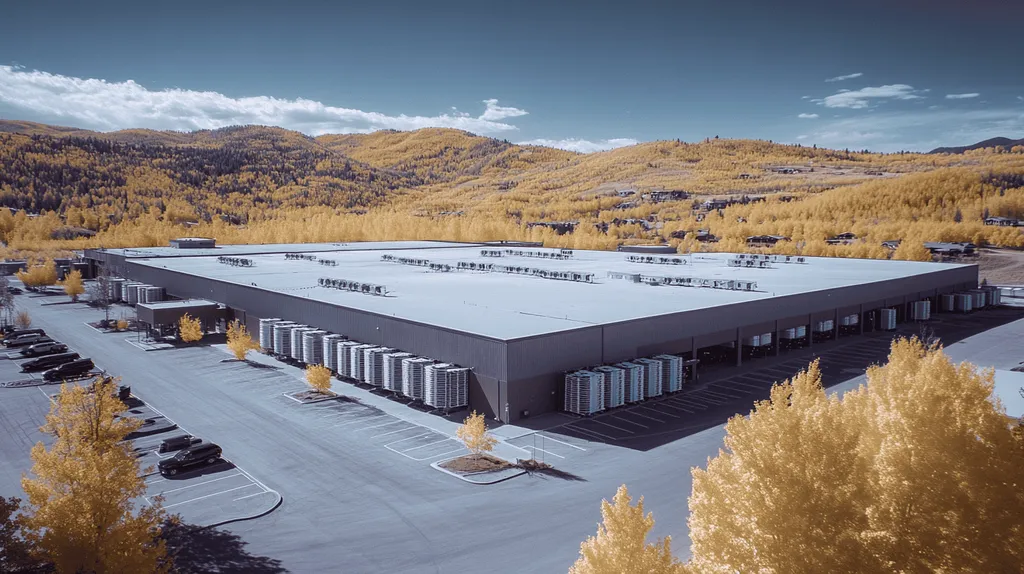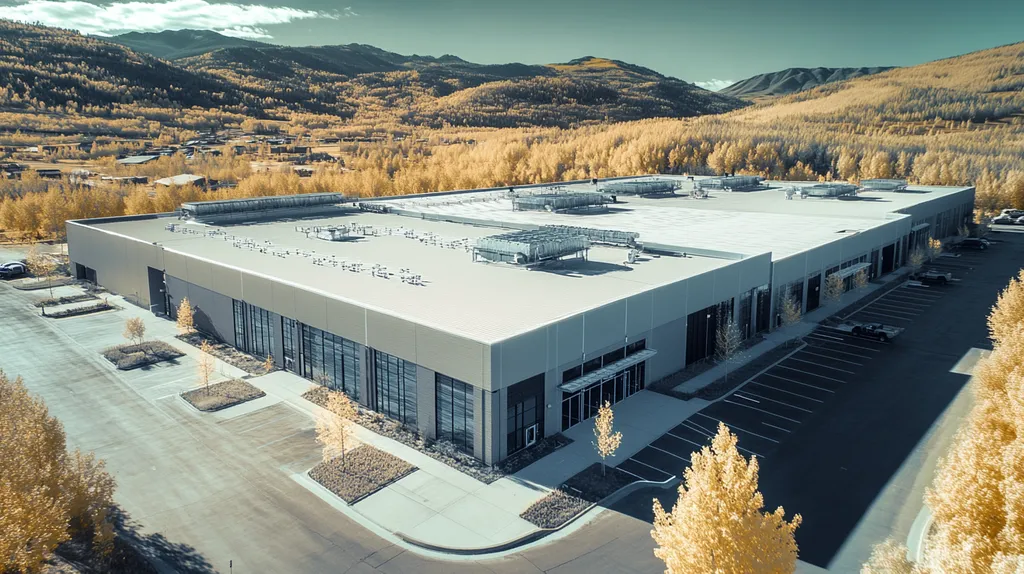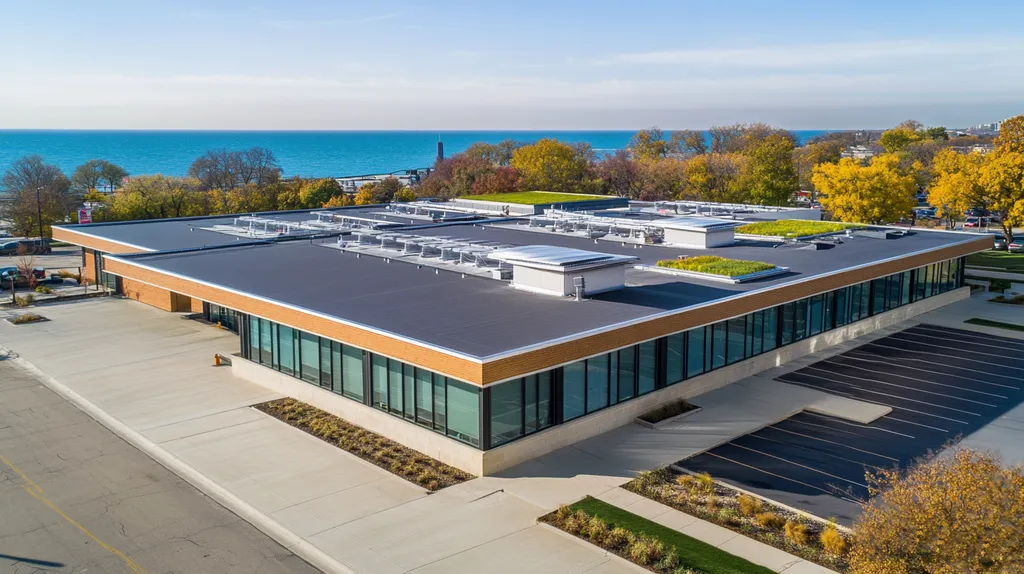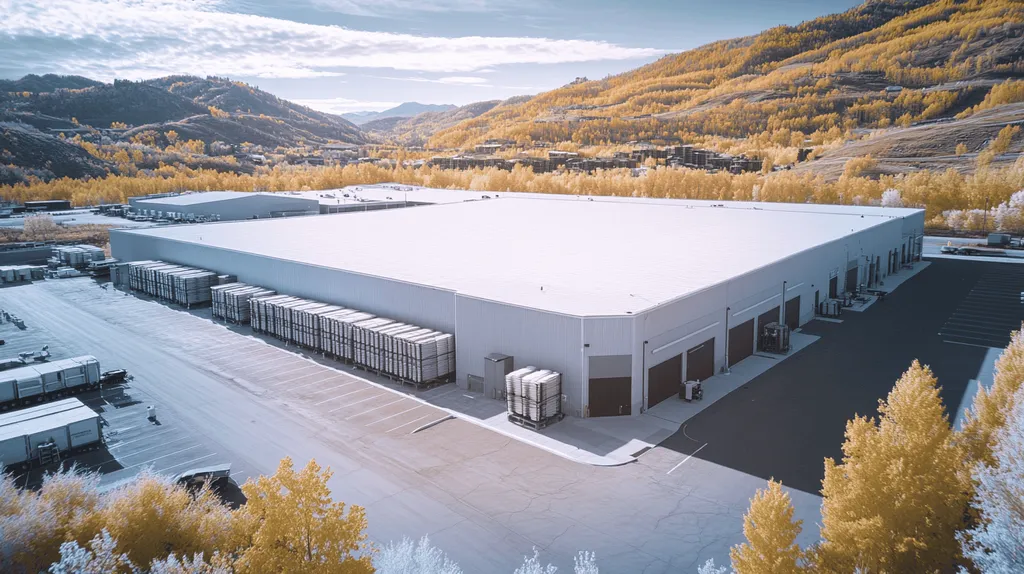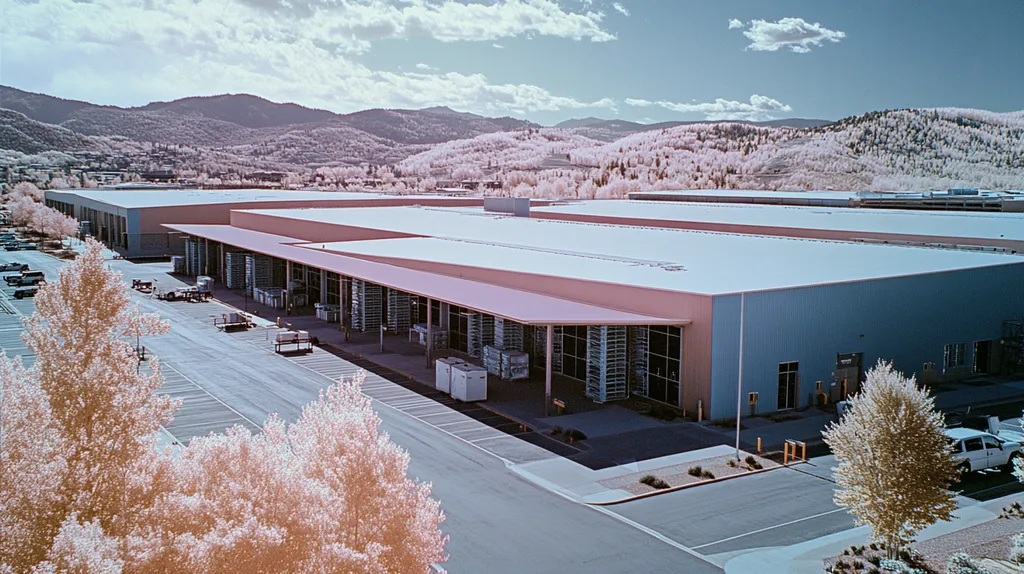Commercial roof failures cost U.S. businesses over $2.5 billion annually in repairs, inventory damage, and operational disruptions. Industry data shows that 40% of these costly incidents stem directly from inadequate contractor verification.
For facility managers and building owners, properly vetting commercial roofing contractors isn’t just about maintenance—it’s about protecting critical business assets and operations from preventable disasters.
This comprehensive guide examines the essential steps, warning signs, and industry standards for verifying contractor expertise before entrusting them with your commercial roofing investment.
SECTION 1: THE BASICS EXPLAINED
Commercial roofing failures cost businesses billions annually in repairs, damaged inventory, and disrupted operations. Recent industry data shows that over 40% of commercial roof problems stem from improper contractor selection or inadequate installation practices. For facility managers and property owners, understanding how to verify contractor experience isn’t just about maintenance—it’s about protecting critical business assets and operations.
What It Is (In Plain Language)
Contractor verification is a systematic process of evaluating a roofing company’s actual capabilities against your specific commercial roofing needs. This goes beyond checking basic business licenses to examine real-world experience with similar projects and systems.
The verification process includes reviewing completed projects, assessing technical expertise with specific roofing materials, and confirming proper insurance coverage. Proper verification examines both the company’s track record and the qualifications of the crews who will perform the work.
Key aspects include confirming experience with your building’s specific roof type, whether it’s built-up roofing (BUR), modified bitumen, or single-ply membrane systems. This specialized knowledge directly impacts installation quality and long-term performance.
Verifying contractor credentials through state licensing boards and professional organizations like the National Roofing Contractors Association (NRCA) helps ensure adherence to industry standards and best practices. (source: JHR4U)
Why It Matters (To Your Building)
Proper contractor verification directly impacts your building’s performance and operational costs. An inexperienced contractor may overlook critical details in flashing installation or membrane seaming, leading to premature leaks and system failure.
Energy efficiency depends heavily on correct installation techniques. Improper installation can increase heating and cooling costs by up to 20% through reduced insulation effectiveness or compromised air barriers.
Building code compliance requires deep knowledge of local regulations and standards. Contractors without proper experience may miss crucial requirements, leading to failed inspections and costly corrections.
Warranty protection often depends on proper installation by qualified contractors. Using unverified contractors can void manufacturer warranties, leaving building owners exposed to significant replacement costs.
How It Works
The verification process starts with requesting detailed documentation of past commercial projects similar to yours. This includes project specifications, completion dates, and current performance data.
Reference checks should focus on specific aspects of previous jobs, including timeline adherence, problem resolution, and long-term performance. Contact multiple references to establish consistent patterns of performance.
Insurance verification confirms adequate coverage for both property damage and worker safety. Request current certificates of insurance and verify coverage limits meet your project requirements.
Technical capability assessment involves reviewing crew training records, manufacturer certifications, and specific experience with your chosen roofing system. This ensures the contractor has both the knowledge and practical experience to execute your project successfully.
SECTION 2: PRACTICAL APPLICATIONS
Commercial roofing represents a significant investment that demands proper installation expertise. Studies show that 35% of premature roof failures stem from improper installation techniques, highlighting the critical need for experienced contractors. Understanding when and how to verify contractor expertise helps facility managers protect their investments while ensuring optimal roof performance across different applications and system interactions.
Common Uses & Examples
Modern commercial roofing systems serve multiple functions beyond basic weather protection. From supporting solar installations to managing stormwater runoff, today’s roofs require specialized knowledge for proper installation and maintenance.
Many manufacturers provide specialized certification programs that verify a contractor’s ability to install specific roofing systems. These certifications confirm proper licensing, insurance coverage, and technical expertise while often extending enhanced warranty protection. (source: GAF)
Large industrial facilities often require custom solutions that integrate multiple roofing technologies. Experienced contractors understand how to blend different systems while maintaining structural integrity and weatherproofing effectiveness.
Healthcare facilities and data centers demand roofing systems that provide exceptional reliability and minimal maintenance requirements. These specialized applications require contractors with documented success in similar high-stakes environments.
When You Need It Most
New construction projects represent critical moments for contractor verification. The integration of roofing with structural elements and building systems requires comprehensive understanding of construction sequencing and system compatibility.
Renovation and expansion projects demand careful evaluation of existing conditions and proper tie-in techniques. Experienced contractors can identify potential challenges early, reducing the risk of water infiltration at transition points.
Emergency repairs following severe weather events require rapid response from qualified teams. Contractors must demonstrate expertise in temporary protection measures while developing permanent repair solutions.
Regular maintenance programs benefit from consistent oversight by experienced professionals. Qualified contractors can spot developing issues before they become major problems, extending roof life and protecting building operations.
Interactions With Other Systems
Commercial roofs must integrate seamlessly with mechanical systems, including HVAC units, exhaust fans, and ventilation equipment. Proper flashing and waterproofing at these penetrations demands specialized knowledge and proven installation techniques.
Electrical and communication systems often require roof penetrations for conduit, cable trays, and antenna mounting points. Experienced contractors understand how to maintain system integrity while accommodating these essential services.
Building automation systems increasingly incorporate rooftop sensors and monitoring equipment. Contractors must demonstrate familiarity with these technologies to ensure proper installation and protection.
Fire protection systems frequently include roof-mounted components that require careful integration. Understanding local codes and system requirements helps prevent compliance issues while maintaining safety standards.
SECTION 3: KEY TERMINOLOGY DECODED
Commercial roofing terminology confusion leads to costly mistakes and system failures. Industry studies show that misunderstandings about technical specifications result in 25% of warranty claims being denied. Clear communication between property owners and contractors becomes essential when discussing million-dollar roofing investments.
Essential Terms Explained
The roofing membrane serves as your building’s primary water barrier. Whether single-ply, modified bitumen, or built-up roofing (BUR), this critical component demands proper specification and installation to prevent leaks.
Roof decking provides the structural foundation supporting all roofing components. Steel, concrete, and wood decking each require specific fastening methods and load considerations for long-term performance.
Insulation systems manage thermal transfer and contribute to energy efficiency. Understanding R-value requirements helps optimize building performance while meeting local energy codes.
Drainage components direct water off the roof through internal drains, scuppers, or gutters. Proper sizing and placement prevent ponding water that can compromise membrane integrity and exceed structural load limits.
Industry Jargon Translated
The success of commercial roofing projects depends heavily on understanding technical requirements. Inexperienced contractors may misinterpret specifications, leading to installation failures and voided warranties. (source: Advanced Roofing)
Flashing details protect roof transitions and penetrations. These critical components require precise installation at walls, equipment curbs, and pipe penetrations to maintain watertight integrity.
Membrane seaming methods vary by material type. Hot-air welding, adhesive bonding, and heat fusion each require specific expertise and quality control measures.
Cover boards provide a stable substrate between insulation and membrane layers. These panels enhance impact resistance and improve membrane adhesion.
Measurement & Units Simplified
Square footage calculations determine material quantities and project costs. Accurate measurements must account for overlaps, waste factors, and extra material for flashings.
Metal thickness affects durability and performance. Understanding gauge specifications helps evaluate material options, with lower gauge numbers indicating thicker metal.
Wind uplift resistance ratings indicate system performance under pressure. These ratings, measured in pounds per square foot (psf), must meet building code requirements based on height and location.
Slope measurements, expressed as rise over run, impact drainage and material choices. Minimum slopes vary by roofing type, affecting both initial design and retrofit options.
SECTION 4: DECISION FACTORS
Selecting a commercial roofing contractor represents a critical business decision with long-lasting financial implications. Industry data reveals that improper contractor selection leads to 40% higher lifetime maintenance costs and can reduce roof lifespan by up to 50%. Understanding key decision factors helps facility managers avoid costly mistakes while maximizing their roofing investment’s value through proper installation and maintenance.
Cost Considerations
Initial bids represent only a fraction of total roofing system costs. Quality installations from experienced contractors typically command higher upfront prices but deliver superior value through reduced maintenance needs and extended service life.
Labor quality significantly impacts long-term performance. Experienced crews may work more efficiently and produce better results than less qualified teams, even at higher hourly rates.
Warranty coverage varies significantly between contractors. Premium contractors often provide enhanced coverage options that protect against both material and workmanship defects.
Emergency repair costs decrease dramatically with proper installation. Professional contractors incorporate redundant protection measures that minimize the risk of catastrophic failures.
Performance Trade-offs
Many manufacturers provide specialized certification programs that verify contractor expertise with specific systems. These certifications ensure proper installation techniques while often extending warranty protection. (source: GAF)
Energy efficiency depends heavily on proper installation techniques. Small errors in insulation placement or membrane seaming can significantly impact building operating costs.
System compatibility requires deep technical knowledge. Experienced contractors understand how different materials interact and can prevent adverse reactions between components.
Weather resistance varies by installation quality. Proper detail work around penetrations and edges makes the difference between watertight protection and chronic leaks.
Lifespan & Durability Factors
Installation quality directly impacts system longevity. Professional contractors follow manufacturer specifications precisely, avoiding shortcuts that compromise performance.
Maintenance requirements vary based on installation practices. Quality workmanship reduces the frequency and scope of required maintenance, lowering lifetime ownership costs.
Climate considerations affect material choices. Experienced contractors recommend appropriate systems based on local weather patterns and building exposure.
Future modifications become easier with proper initial installation. Professional contractors plan for potential changes, incorporating access points and reinforcement where needed.
SECTION 5: COMMON CHALLENGES
Commercial roofing failures can devastate business operations and jeopardize building assets. Industry data shows that 30% of commercial roofs experience premature failure due to inadequate contractor qualifications or improper installation practices. Understanding and addressing common challenges in contractor verification helps facility managers protect their investments while ensuring optimal roof performance.
Frequent Problems & Solutions
Local weather patterns create unique installation challenges that demand specialized expertise. Regional conditions affect material selection, installation timing, and long-term performance expectations.
High-traffic rooftop areas require enhanced protection and reinforcement. Experienced contractors identify vulnerable zones and incorporate additional safeguards during installation.
Drainage issues frequently stem from improper slope calculations or inadequate drain placement. Professional contractors perform detailed site surveys to ensure proper water management.
Material compatibility problems arise when contractors lack system-specific training. Proper verification ensures teams understand chemical interactions and installation requirements for different components.
Warning Signs To Watch For
Checking credentials and verifying insurance coverage helps protect against liability and confirms contractor legitimacy. Local expertise in weather conditions and building codes proves essential for proper material selection and installation techniques. (source: MCX Roofing)
Inconsistent communication during the bidding process often indicates deeper organizational issues. Professional contractors maintain clear channels of communication throughout project planning.
Vague warranties or limited coverage terms suggest potential quality concerns. Reputable contractors provide detailed warranty documentation outlining both material and workmanship guarantees.
High-pressure sales tactics or unrealistic promises should raise immediate concerns. Quality contractors focus on realistic solutions based on building needs rather than quick sales.
Preventative Approaches
Establishing clear qualification criteria helps screen potential contractors effectively. Requirements should include specific experience with similar systems and building types.
Documentation review processes verify training certificates, insurance coverage, and manufacturer certifications. Regular updates ensure compliance throughout the project lifecycle.
Reference checks should focus on specific performance metrics and project outcomes. Contact multiple sources to establish consistent patterns of quality and reliability.
Quality control protocols during installation prevent common failure points. Regular inspections and documentation requirements keep contractors accountable for proper procedures.
SECTION 6: NEXT STEPS & RESOURCES
Commercial roofing investments demand thorough contractor vetting to protect building assets and operations. Recent industry studies show that over 60% of premature roof failures stem from inadequate contractor selection processes or improper installation practices. For facility managers and property owners, knowing exactly what questions to ask, which standards to reference, and where to find reliable information can mean the difference between decades of reliable performance and catastrophic failure.
Questions To Ask Providers
Commercial roofs demand specialized expertise in materials like TPO, EPDM, and PVC membranes. Facility managers must verify contractors’ specific experience with these systems through detailed case studies and project portfolios. (source: Gutapfel Roofing)
Request documentation of manufacturer certifications and training programs completed by installation crews. This verification ensures teams understand proper installation techniques for your specific roofing system.
Examine safety records, insurance coverage, and bonding capacity. These elements protect your organization from liability while demonstrating the contractor’s commitment to professional operations.
Ask for detailed maintenance recommendations and warranty terms. Quality contractors provide clear guidelines for system care and stand behind their work with comprehensive coverage.
Industry Standards & Guidelines
The National Roofing Contractors Association (NRCA) establishes baseline requirements for commercial roofing installation. Familiarize yourself with these standards to evaluate contractor proposals effectively.
Building codes and local regulations impact material selection and installation requirements. Verify that contractors maintain current knowledge of applicable codes and permit processes.
FM Global and UL requirements set performance standards for fire resistance and wind uplift. Ensure contractors understand these ratings and how they apply to your facility.
Energy codes increasingly influence roofing decisions through reflectivity and insulation requirements. Contractors should demonstrate expertise in meeting these evolving standards.
Further Learning Simplified
Professional organizations offer educational resources designed specifically for facility managers. These materials help build knowledge without requiring technical expertise.
Manufacturer websites provide detailed technical information and installation guidelines. Review these resources to understand system requirements and best practices.
Industry publications track emerging trends and technologies affecting commercial roofing. Regular review helps inform decisions about system selection and maintenance.
Local roofing associations often host seminars and training events. These sessions provide opportunities to expand knowledge while networking with qualified contractors.
The Bottom Line
With commercial roof failures costing businesses over $2.5 billion annually, proper contractor verification isn’t optional—it’s essential for protecting valuable assets and operations.
Industry data conclusively shows that 40% of all commercial roof failures stem directly from inadequate contractor vetting and improper installation practices.
Thorough verification of experience, certifications, and past performance provides the foundation for decades of reliable roof performance.
By following established verification protocols, checking manufacturer certifications, and demanding proof of specific system expertise, facility managers can avoid joining the costly statistics of premature roof failure.
The future of commercial roofing depends on raising industry standards through rigorous contractor qualification processes that protect both buildings and businesses.
FREQUENTLY ASKED QUESTIONS
Q. What is verifying a commercial roof contractor’s experience?
A. Verifying a contractor’s experience involves evaluating their skills, completed projects, and credentials. This process ensures the contractor has the necessary expertise for your commercial roofing project, helping to prevent future issues.
Q. How can I ensure my industrial roof is installed correctly?
A. Focus on verifying contractor expertise, requesting documentation of similar successful projects. Communication about specific installation methods also helps ensure that your industrial roof meets required standards for performance and longevity.
Q. Why does commercial roof terminology matter?
A. Understanding the terminology helps prevent miscommunications that can lead to costly mistakes. Clear communication about roof components and specifications ensures that all parties are aligned on expectations, reducing the risk of errors.
Q. What decision factors are critical for contractor selection?
A. Consider experience, warranties offered, and overall project bids. A careful evaluation of these factors helps ensure that the chosen contractor can provide quality workmanship and long-lasting results for your roofing investment.
Q. What common challenges arise with contractor verification?
A. Challenges include inconsistent communication, inadequate documentation, and misinterpretation of specifications. Addressing these issues early in the verification process can prevent future complications in your roofing project.
Q. What next steps should I take after contractor verification?
A. After verification, discuss detailed project plans and maintenance schedules with the contractor. Ensure both parties have a clear understanding of expectations, timelines, and warranty terms to promote successful project outcomes.
Q. How do I find qualified contractors for my commercial roof?
A. Start by researching online reviews, asking for recommendations, and checking local associations. Look for contractors with specialized experience and solid reputations in commercial roofing projects similar to yours.

